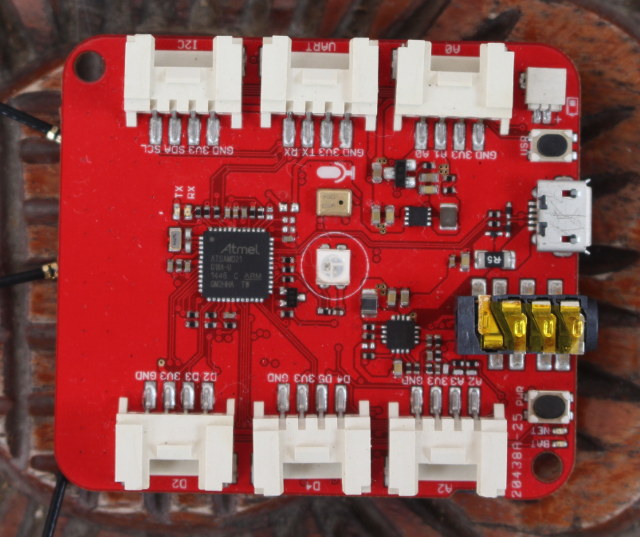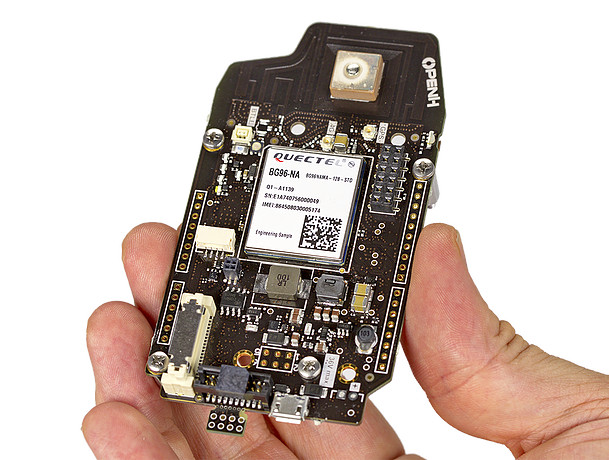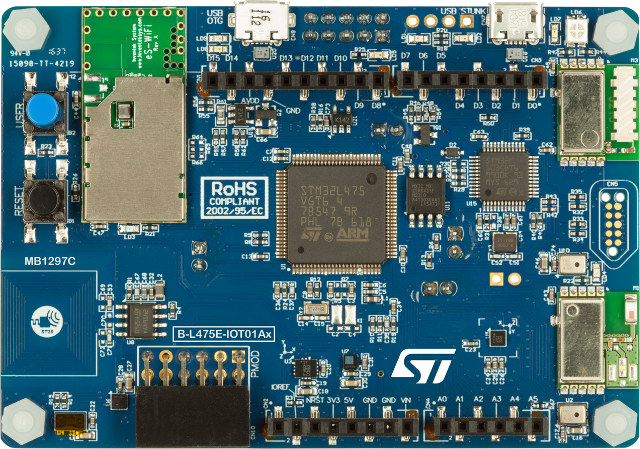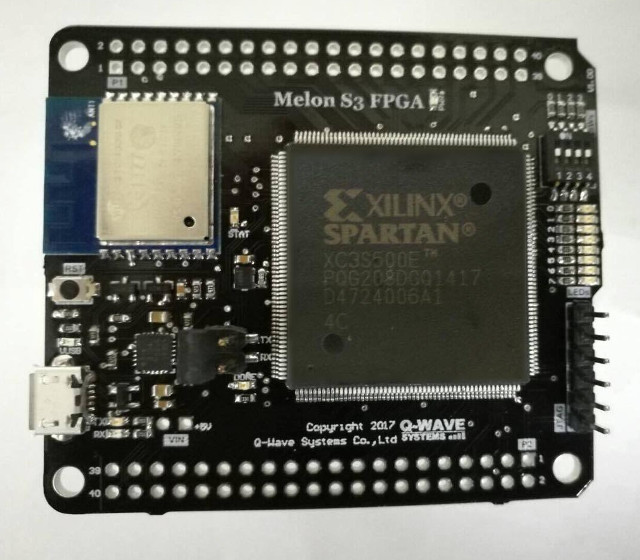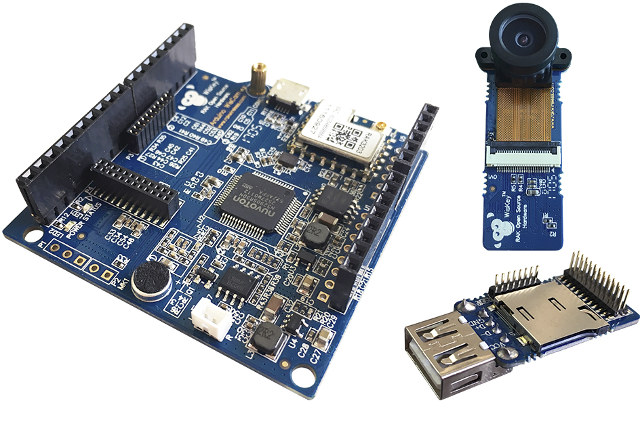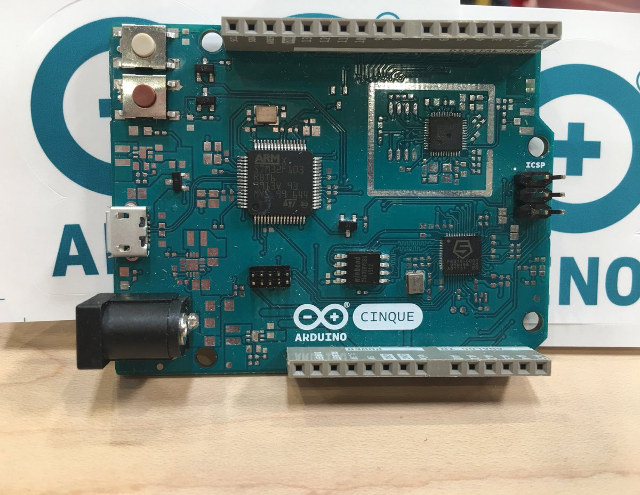Wio GPS – also called Wio Tracker – is an Arduino compatible board based on Microchip Atmel SAMD21 MCU with GPS, Bluetooth, GSM/GPRS connectivity, as well as several Grove connectors to connect sensors and modules for your IoT project. SeeedStudio sent me a sample for evaluation, so I’ve tested it, and reported my experience below by testing some of the Arduino sketches. Wio Tracker Unboxing All I got in the package was Wio GPS tracker v1.1 board. The top includes the Atmel MCU, an RGB LED, a microphone and 3.5mm AUX jack to make phone calls, a user and power button, a micro USB port for power and programming, a small 2-pin connector for a battery, and 6 Grove connectors for digital, serial, I2C and analog modules. The other side of the board comes with Quectel MC20 module that handles Bluetooth, GPS and GSM, a dual use micro SD card […]
Apple Opens HomeKit Accessory Protocol Specification to Non-Commercial Projects
HomeKit is a software framework that allows Apple users to control smart devices with their iPhone or iPad. But so far, you had to become an MFI licensee to design a HomeKit compatible device, you product had to be tested by Apple, and – according to a story on Hackster.io – also required a special cryptographic chip for authentication. Developers creating commercial devices still need to become an MFI license, but Apple has now opened HomeKit Accessory Protocol Specification for non-commercial projects, meaning you can now use the Framework on Arduino, ESP8266 boards, Raspberry Pi, and other development boards using software authentication. You could already use HomeKit on Raspberry Pi board previously using HomeBridge, but the advantage now is that you don’t need to breach Apple’s terms and conditions, and you can talk directly to your phone without the need for a bridge. If you want the specifications got to […]
XOD is a Visual Programming Language for Arduino, Raspberry Pi, and other Maker Boards
When you think about visual programming on the Raspberry Pi or Arduino board, Scratch may come to mind, but some developers have decided to create their own visual programming language working for Arduino, Raspberry Pi, and other boards. Meet XOD, pronounced ksəud. The developers explains their used “functional reactive programming principles and added graphical functionality”. XOD is comprised of “nodes” that represents either some physical device like a sensor, motor, or relay, or some operation such as addition, comparison, or text concatenation, which you can link together through inputs and outputs to create a program, and XOD IDE will compile the resulting diagram to create and upload a binary program to Arduino, Raspberry Pi, etc… You can also convert a XOD diagram into a node with inputs and outputs to use it in another diagram, so the language is scalable. The developers are now looking for testers to play with […]
OpenH PULSAR and QUASAR Boards Add 4G LTE Cat M1, or Cat 4/1 to Raspberry Pi Boards
We’ve seen a bunch of IoT boards with 2G connectivity recently including Orange Pi 2G-IoT, Wio GPS, and Nadhat, but while in some countries 2G will still work for many years, those boards are already obsolete – or soon will be – in many other countries. However, finding low cost 3G / 4G boards is more difficult, and while one solution is to use 3G or 4G USB dongles, “OpenH – Open Hardware” – part of KLiP Industries – has designed two boards with 4G connectivity provided by Quectel modules. OpenH PULSAR Board PULSAR board is compatible with Arduino Zero and features the following specifications: MCU – Atmel/Microchip SAMD21 ARM Cortex M0+ MCU (the as the one used in Arduino Zero) Connectivity 4G LTE Cat M1 modem with GPS (Quectel BG96-NA); No external antennas required Bluetooth and NFC Security – Dedicated management CPU with crypto engine Power Supply 10W digital power supply and battery charger with direct solar input FCC […]
STMicro Unveils STM32L4 Discovery Kit for IoT with WiFi, BLE, NFC, Sub-GHz RF, and Plenty of Sensors
STMicro has recently introduced B-L475E-IOT01A Discovery kit powered by STM32L4 Cortex-M4 and targeting IoT nodes with a choice of connectivity options including WiFi, Bluetooth LE, NFC, and sub-GHZ RF at 868 or 915 MHz, as well as a long list of various environmental sensors. B-L475E-IOT01A Discovery kit key features and specifications: MCU – STM32L4 Series MCU based on ARM Cortex -M4 core with 1 MB Flash memory, 128 KB SRAM Storage – 64 Mbit (8MB) Quad-SPI Flash memory (Macronix) Connectivity Bluetooth 4.1 LE module (SPBTLE-RF) Sub-GHz (868 or 915 MHz) low-power-programmable RF module (SPSGRF-868 or SPSGRF-915) Wi-Fi module based on Inventek ISM43362-M3G-L44 (802.11 b/g/n compliant) Dynamic NFC tag based on M24SR with its printed NFC antenna Sensors 2x digital omni-directional microphones (MP34DT01) Capacitive digital sensor for relative humidity and temperature (HTS221) 3-axis magnetometer (LIS3MDL) 3D accelerometer and 3D gyroscope (LSM6DSL) 260-1260 hPa absolute digital output barometer (LPS22HB) Time-of-Flight and gesture-detection […]
Melon S3 FPGA Arduino & Raspberry Pi Compatible Board is Programmable over WiFi using ESP8266 WiSoC
Q-Wave Systems, an embedded systems company based in Thailand, has designed Melon S3 FPGA board powered by a Xilinx Spartan 3E FPGA with WiFi connectivity added through a ESP8266 module programmable with the Arduino IDE , and featuring two Raspberry Pi compatible headers. The FPGA bitstream can be updated over WiFi, and does not require a JTAG debugger. Melon S3 FPGA specifications: FPGA – Xilinx Spartan XC3S500E FPGA with 500K gates, 73Kb Distributed RAM, 4 Digital Clock Manager (DCM), 20 Multipliers (18×18), 360 Kb Block RAM WiFi module – WROOM-2 with Espressif ESP8266 32-bit MCU @ 80 MHz supporting 802.11 b/g/n WiFi. Storage – 4MB SPI flash in total with 1MB for ESP8266, 3 MB for FPGA Expansion – 2x 40-pin Raspberry Pi compatible headers; 3.3V tolerant Debugging – Onboard USB-UART Silicon Labs CP2104 for configuration, debugging and power; 6-pin JTAG port for debugging/programming Misc – 8x Users LEDs, 4x […]
RAK WisCam is a $20 Arduino Compatible WiFi Camera Linux Board Powered by Nuvoton N32905 ARM9 Processor
A couple of weeks ago I wrote about Rakwireless’ RAK CREATOR Pro development board based on Realtek Ameba RTL8711AM Wireless MCU, and part of their Wiskey family of development boards. Sub-family include WisNode for IoT boards, WisAP for OpenWrt boards, WisPLC for PLC hardware, and WisCam for WiFi video camera boards. The company has recently introduced Wiscam RAK5281 Arduino compatible Linux board powered by a Nuvoton ARM9 MCU, and supporting a camera module or an SD card + USB module. RAK WisCam specifications: SoC – Nuvoton N32905R3DN ARM926EJ processor @ 200 MHz with 8KB internal SRAM, 16KB IBR internal booting ROM, 16Mbit x16 DDR2 memory Storage – 128 MBit SPI flash, included sub-module adds micro SD card Connectivity – 802.11 b/g/n WiFi via Realtek RTL8189FTV module Camera via sub-module 648×488 pixel VGA CMOS Image Sensor (GC0308); 102° FOV Video – QVGA (320×240) 30FPS, VGA(640×480) 30FPS, MJPEG encoding Photo – JPEG, […]
Arduino Cinque Combines SiFive RISC-V Freedom E310 MCU with ESP32 WiFi & Bluetooth SoC
SiFive introduced the first Arduino compatible board based on RISC-V processor late last year with HiFive1 development board powered by Freedom E310 MCU, but the company has been working with Arduino directly on Arduino Cinque board equipped with SiFive Freedom E310 processor, ESP32 for WiFi and Bluetooth, and an STM32 ARM MCU to handle programming. Few other technical details have been provided for the new board, but since it looks so similar to HiFive1, I’ve come with up with preliminary/tentative Arduino Cinque specifications: MCU – SiFive Freedom E310 (FE310) 32-bit RV32IMAC processor @ up to 320+ MHz (1.61 DMIPS/MHz) WiSoC – Espressif ESP32 for WiFi and Bluetooth 4.2 LE Storage – 32-Mbit SPI flash I/Os 19x Digital I/O Pins 19x external interrupt pins 1x external wakeup pin 9x PWM pins 1/3 SPI Controllers/HW CS Pins I/O Voltages – 3.3V or 5V supported USB – 1x micro USB port for power, […]


